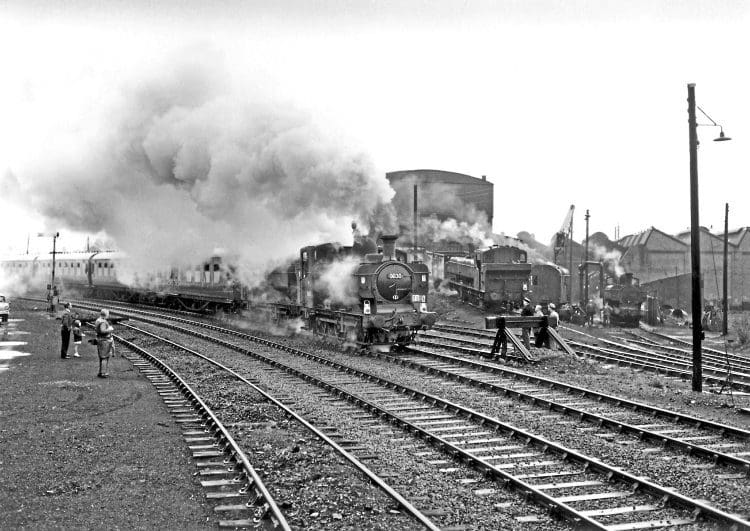In the last days of BR steam there were some surprising workings, but in the days before mobile phones and the internet, reliable information could be hard to come by. Robert Anderson reports on one of the last passenger trains to be hauled by a Great Western pannier tank, which also involved an LNER Pacific in North Wales shortly before its withdrawal.
The phone rang – as it did in those days – “personal call for Mr Anderson” yelled out the telephone attendant from the adjoining lobby. Damn, I thought, as we weren’t supposed to receive such calls. It was Dave Hartley who I had come to know in the late 1950s/early 1960s through his organisational skills in arranging coach trips to engine sheds and works, when in one day we would note over 1,000 steam locomotives.

“Did I fancy a trip out to Brymbo on a Sunday in August?” he asked. “Where the heck’s Brymbo?” was my reply. “It’s a steelworks up in the hills above Wrexham and there’s two Great Western tanks going up there with a special. Supposed to be the first passenger train up there on that line for about 30 years.” (I later learned he was right as the line had lost its passenger service in 1930, although for a few years later, one or two auto-train pigeon specials had been run. Now how about that. Only the Welsh could do such things).
Boy oh boy, yes I was interested! I had no photographs whatsoever in the Wrexham area. In fact, that whole area of north east Wales was a blank on my photographic map. On top of that, non-preserved or BR-owned GWR standard gauge locomotives in steam were decidedly rare by now as the Western Region had been the first to abandon regular steam. Officially this was from November 27, 1965, although Oxford clung on till January 3,
1966 but even after this there were steam sightings as late as April of that year, due to diesel failures on inter-regional services.
Enjoy more Heritage Railway reading in the four-weekly magazine.
Click here to subscribe & save.
However, boundary changes in January 1963 had seen a huge chunk of the WR’s territory from Banbury to Birkenhead, including its share of Birmingham and the Black Country with central and north east Wales, transferred to the London Midland Region. This meant the former GWR shed at Wrexham; Croes Newydd with its sub sheds at Penmaenpool, Bala and Trawsfynydd which for many years had been coded 84J under the Wolverhampton Stafford Road district and later 89B in the Shrewsbury district, suddenly found itself in the LMR, coded 6C as part of the Chester district.
As a result of these boundary changes, quite a large fleet of GWR locomotives had escaped to the jurisdiction of the LMR with Croes Newydd having over 30 including a fair selection of pannier tanks. In April, 1965, despite the universal onslaught on steam it still had 25 0-6-0PTs which was more than half of its total locomotive allocation. However, within six months this had dropped to 15 which nevertheless represented 10% of the entire GWR steam locomotives still in capital stock.
Read more in Issue 239 of HR – on sale now!
Advert
 Enjoy more Heritage Railway reading in the four-weekly magazine. Click here to subscribe.
Enjoy more Heritage Railway reading in the four-weekly magazine. Click here to subscribe.




